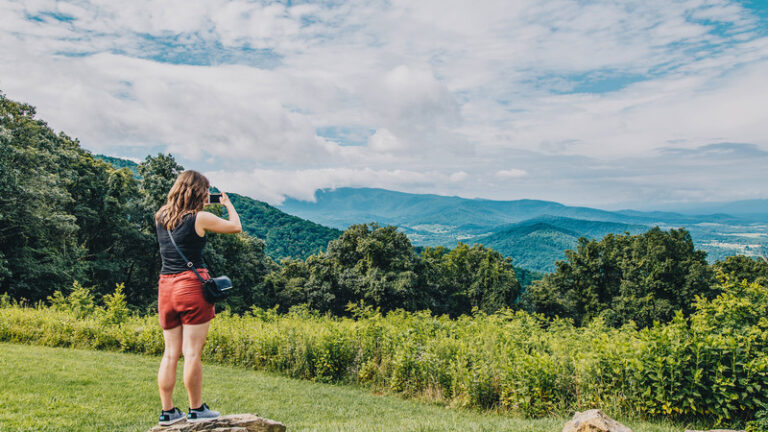Semana Santa 2025: A Journey into Spain’s Most Revered Celebration
Semana Santa, or Holy Week, is a deeply spiritual and cultural event that takes place in Spain every year, culminating in Easter Sunday. For 2025, Semana Santa begins on Sunday, April 13, and concludes on Sunday, April 20, offering travelers a unique opportunity to witness one of the most profound and visually captivating celebrations in the world.
Whether you’re a devout follower, a lover of Spanish culture, or an adventurous traveler seeking to immerse yourself in traditions, this blog will guide you through the origins, highlights, and must-know insights about Semana Santa.
The Origins and Cultural Significance of Semana Santa
Semana Santa traces its roots back to the Middle Ages when religious brotherhoods (cofradías) began organizing processions to commemorate the Passion of Christ. Over centuries, these processions evolved into dramatic public displays of devotion, blending religious fervor with rich artistry.
Beyond its religious importance, Semana Santa is a celebration of Spanish identity. “Semana Santa is more than a religious event; it’s a cultural immersion into the soul of Spain,” says a local historian. It is during this week that communities come together, showcasing centuries-old craftsmanship in floats (pasos), robes, and music.
Key Locations in Spain for Semana Santa Celebrations
While Semana Santa is observed throughout Spain, certain cities are renowned for their grand processions and distinct traditions.
Seville
Seville is the heart of Semana Santa, attracting thousands of travelers each year. The city is known for its dramatic processions, intricate pasos depicting scenes from the Passion, and the haunting Saeta—emotive flamenco-style songs sung during processions. The El Silencio procession, held at midnight, is one of the most solemn and awe-inspiring events.
Malaga
Malaga offers a livelier take on Semana Santa, blending pageantry with celebration. Its processions feature massive floats carried by locals, accompanied by military bands and cheers from the crowd. The release of a prisoner, a unique tradition specific to Malaga, adds a poignant touch to the festivities.
Valladolid
For those seeking a quieter, more somber experience, Valladolid is an excellent choice. Here, simplicity and introspection define the processions, emphasizing the spiritual aspect of Holy Week. Love art? The pasos in Valladolid often feature museum-quality sculptures.
Cuenca
The high-pitched melodies of trumpets and the cultural charm of Cuenca make Semana Santa here unforgettable. One standout event is the Camino del Calvario, a procession at dawn through the narrow streets of the city’s old quarter.
The Processions and Their Symbolic Elements
The processions of Semana Santa are masterpieces of art, devotion, and tradition. Each procession is organized by a religious brotherhood and features distinct elements that tell a story of faith and community.
Pasos
These floats, often centuries old, depict scenes from the Passion of Christ or the Virgin Mary. Handcrafted with meticulous attention to detail, they are adorned with flowers, candles, and gold embellishments.
Nazarenos
The hooded penitents, or Nazarenos, walk solemnly in the processions as an act of penance. Their robes, unique to each brotherhood, are rich with symbolism, representing devotion and humility.
The Saeta
An emotionally charged tradition, the Saeta is a flamenco-style song sung spontaneously as a paso passes by. “Experiencing the processions firsthand gives you a unique perspective on Spanish identity and faith,” says a religious scholar.
Unique Experiences During Semana Santa
Semana Santa is not just about spectating—it’s about immersing yourself in a living tradition.
- Morning Processions: Though most travelers flock to nighttime processions, early morning events offer a quieter, more contemplative experience.
- Decorated Streets: Adorning the streets with flowers and colorful carpets is a lesser-known but beautiful tradition in smaller towns.
- Local Artisans: Visit workshops where pasos and robes are meticulously designed to gain a deeper appreciation for the craftsmanship behind the spectacle.
Insider Tip
Arrive early to secure a good viewing spot for the processions. Central streets like Seville’s Calle Sierpes or Malaga’s Calle Larios often fill up hours before events begin.
Tips for Travelers
Planning ahead is crucial to fully enjoy Semana Santa. Here’s how to make the most of your trip.
Accommodation
Book early! Hotels in major cities like Seville and Malaga see a surge in demand. Hostels and homestays offer budget-friendly options but fill up quickly.
Transportation
Be prepared to walk—many streets close to traffic during Semana Santa. If you’re traveling between cities, book train tickets in advance to avoid surprises.
Local Customs
Respectful behavior is essential. Dress modestly for religious ceremonies, and avoid loud conversations during the processions. “Respectful engagement is key; observe, learn, and appreciate the deep traditions,” emphasizes a cultural guide.
The Food of Semana Santa
Spanish cuisine comes alive during Holy Week, offering travelers another layer of cultural connection.
- Torrijas: A sweet, cinnamon-laden bread soaked in milk or wine, then fried to perfection.
- Bacalao: Salt cod, often cooked in a tomato-based stew or as crispy croquettes.
- Pestiños: Fried dough coated in honey, an Andalusian favorite.
“The aromas of torrijas and incense create an atmosphere you won’t find anywhere else,” shares a Seville resident.
Personal Anecdote
I’ll never forget trying torrijas for the first time in Seville. A local grandmother handed me a freshly made piece, explaining how her family had passed down the recipe for generations.
How to Respectfully Engage in Semana Santa
Semana Santa is a sacred week, deeply rooted in tradition. To truly appreciate it, approach it with an open mind and respect.
- Observe rather than participate unless invited to join.
- Avoid disruptive behavior or overt displays of tourism, like using flash photography during processions.
- Take time to learn about the history behind the events—locals are often happy to share insights!
Connect to Spanish Culture through Semana Santa
Semana Santa 2025 is not just an event—it’s an immersive experience that invites you to connect with the heart of Spanish heritage. From dramatic processions in Seville to the intimate traditions in smaller towns, Holy Week offers something for everyone.
Whether it’s the soul-stirring Saeta, the intricate beauty of the pasos, or the sweet aroma of torrijas, Semana Santa will leave an indelible mark on your senses and spirit.
We’d love to hear how you experienced Semana Santa. Share your stories in the comments or tag us in your photos to keep the conversation alive!





